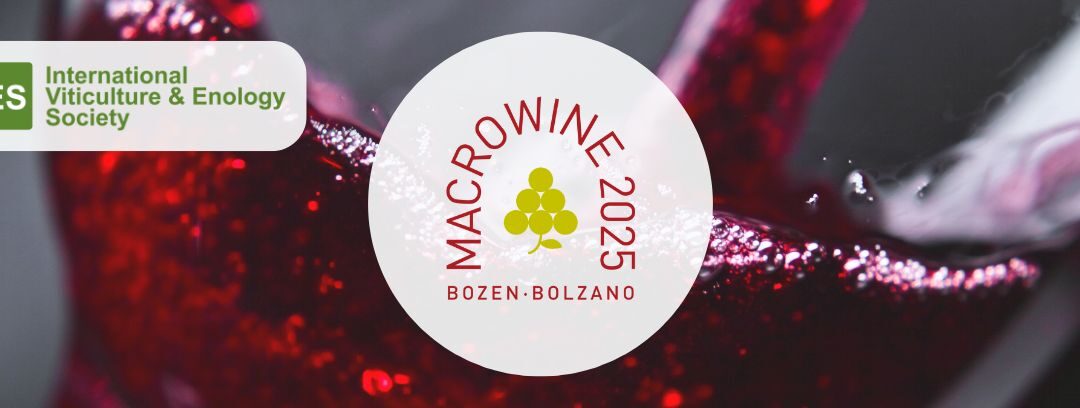Winemaking is a complex microbial process involving the co-existence and interactions of various microorganisms [1].
Macrowine
Peptidomics in the wine industry: literature perspectives on functional importance and analytical methods
Winemaking is a globally significant industry in the field of food technology (218 mhL of wine estimated for 2024 harvest) [1], which activity produces tons of by-products annually, including pomace (pulp, stems, seeds, skins), lees, organic acids, CO2, and water [2].
Market analysis of Chilean Pinot noir, Carménère, and Cabernet-Sauvignon wines: A comparative study of chemical parameters across low, medium, and high price segments
Wine quality is a complex concept determined by multiple factors, including vineyard management, winemaking operations, and the sensory perception of key attributes.
Oenological potential of cv. Tortojona: A minority grape variety from Extremadura, southwest Spain
This work, included in the VAVEGEX project, aims to evaluate the oenological, phenolic, chromatic and sensory characteristics of the grapes, must and wines produced from cv. Tortojona, minority variety grown in Extremadura region (Southwest, Spain).
Development of an analytical method for the quantification of compounds responsible for the green character of wines: influence of ripeness on their levels
Red wines can sometimes exhibit undesirable green, herbaceous, and vegetative aromas, negatively impacting their sensory profile and consumer acceptance.
Evaluating the effectiveness of alginic acid, sodium carboxymethylcellulose, and potassium polyaspartate in preventing calcium tartrate instability in wines
Calcium-induced instabilities present a major challenge in bottled wines, with calcium tartrate (CaT) precipitation becoming increasingly common due to rising calcium levels in grape must, largely driven by climate change. Although CaT is an insoluble salt, its instability— although less frequent than potassium hydrogen tartrate (KHT) precipitation—is more difficult to predict and control, as it develops gradually over time.
Eliminating Brettanomyces and lactic acid bacteria in wine: the potential of Ultra-High Pressure Homogenization (UHPH)
Ultra-High Pressure Homogenization (UHPH) is an innovative technology that can be seamlessly integrated at various stages of winemaking. Its application helps minimize or even eliminate the need for sulphites and other antimicrobial or antioxidant treatments, offering a faster and more sustainable alternative.
Convergence and divergence in chemical and sensory profiles of disease-resistant and Vitis vinifera white wines from South Tyrol: addressing strategies for market adoption
This study investigates the chemical and sensory profiles of white wines produced from disease-resistant hybrid grape cultivars (DRHGCs) compared to traditional Vitis vinifera L. cultivars in South Tyrol, Italy.
Transforming winemaking waste: grape pomace as a sustainable source of bioactive compounds
Grapevines (Vitis vinifera L.) are plants of great economic importance, with over 80% of grape production dedicated to wine production, yielding more than 258 million hectoliters annually [1].
Effects of Non-Grape Materials (MOG) on wine quercetin composition: insights from synthetic and Merlot grape juice fermentation
Quercetin precipitation has become an increasingly common issue in red wine, often resulting in visually unpleasant sediments and diminished product quality.
Screening of Italian red wines for quercetin precipitation risk index
Quercetin (Q), a phenolic compound released from grape skins during red wine maceration, has been identified as a source of instability in bottled wines, particularly Sangiovese, due to crystallisation. This phenomenon represents an economic challenge for producers and affects wine clarity and consumer perception.
The role of protein-phenolic interactions in the formation of red wine colloidal particles
Colloids play a crucial role in red wine quality and stability, yet their composition and formation mechanisms remain poorly understood.
Potential of native Uruguayan yeast strains for production of Tannat wine
Must fermentation is a complex process influenced by various factors, especially microbiological activities. The characteristics and quality of the resulting wine are closely linked to the stages that unfold throughout this progression.
Effect of ozone treatments in wine production of young and short-term aged white wines: destructive and non-destructive evaluation of main quality attributes
The main aim of WiSSaTech project (PRIN P2022LXY3A), supported by Italian Ministero dell’Università e della Ricerca and NextGenerationEU program, is to investigate eco-friendly and safe alternatives to sulphur dioxide (SO2) in wine production.

OENO One Special Issue and abstracts for Macrowine 2025
IVES is collaborating with the organizers of Macrowine 2025 to promote the scientific content including a special issue in OENO One and the publication of nearly 200 abstracts in Open Access on IVES Conference Series.
Preliminary studies on polyphenol assessment by Fourier transform-near infrared spectroscopy (FT-NIR) in grape berries
NIR spectroscopy has widely been tested in viticulture as powerful alternative to traditional analytical methods in the field of quality evaluation. NIR instruments have been used for assessing must and wine quality features in several works, but little information regarding their application on whole berries for polyphenol determination is available.
Evaluation of methods used for the isolation and characterization of grape skin and seed, and wine tannins
Validation of the phloroglucinolysis and RP-HPLC method showed selectivity and repeatability within acceptable limits for all investigated matrices. Recovery of polymeric phenols by SPE was also acceptable.
Identification and formation kinetic study of phenolic compounds-volatile thiols adducts by enzymatic oxidation
By using HPLC-ESI-MS, 1H, 13C and 2D NMR, new addition products between catechin, epicatechin, caftaric acid and 3SH were characterized. Caftaric acid formed more rapidly adducts with 3SH than catechin and epicatechin in the absence of other nucleophiles.
